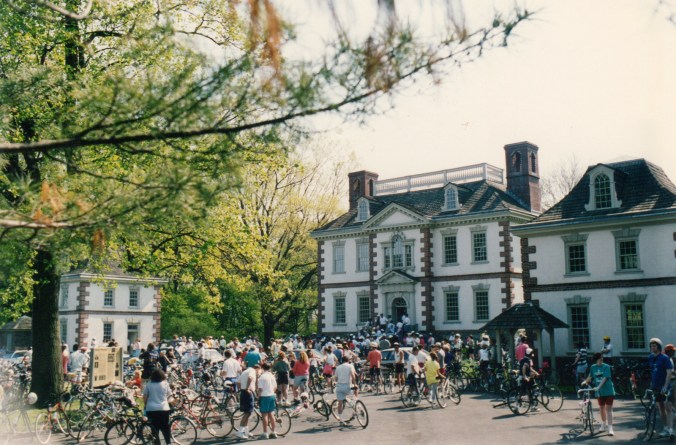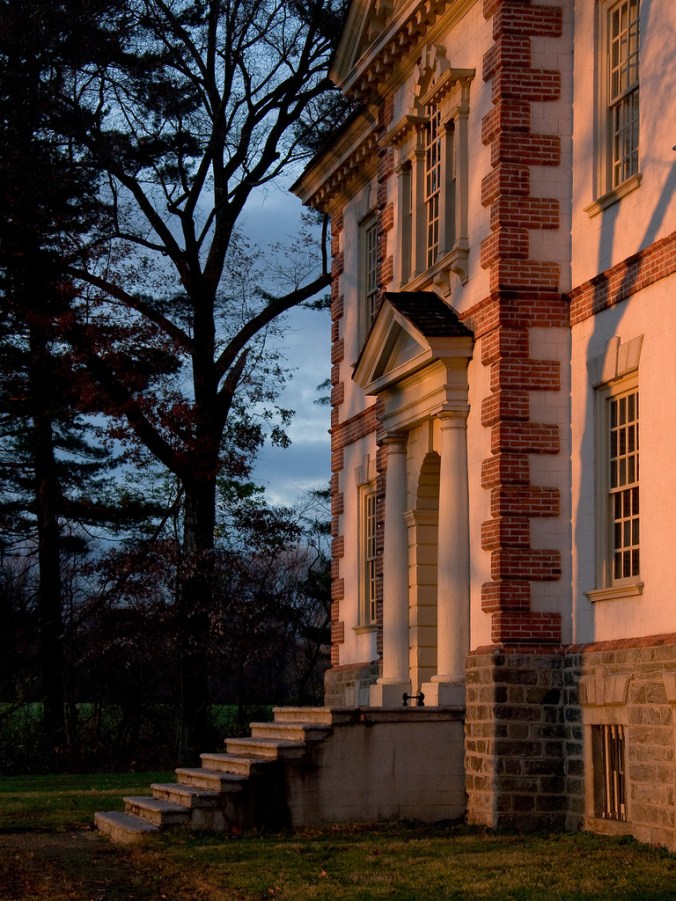By the spring of 1763 work was well underway on Captain John and Margaret Macpherson’s country retreat Mount Pleasant. The Macpherson’s initially purchased 38 acres of land from Benjamin Mifflin and his wife Hannah in September 1761 and would add to this acreage with additional purchases of land after the buildings on the site were completed four years later.

Thomas Nevell daybook, Wetherill Papers, Division of Special Collections, Van Pelt Library, University of Pennsylvania
Thomas Nevell, the Carpenters’ Company member who designed and built Mount Pleasant for the Macpherson’s completed work on the barn and stable buildings by December 1762 allowing them to be used for workshops and material storage during the construction of the main house and two pavilions.
On May 10, 1765 Nevell charged John Macpherson for “hanging 4 Luking glases” indicating the plastering and papering of the interior of the main house had been completed. For the Macpherson’s this meant that 248 years ago this month they were ready to take possession of Mount Pleasant and spend the summer enjoying the breezes along the banks of the Schuylkill away from the heat and crowds of the city. For Nevell it meant two years of waiting to be paid in full for his work at Mount Pleasant. Macpherson made a final cash payment of £418.11.9 on April 28, 1767. By several accounts Macpherson still owed Nevell an additional £400 for his work but according to Nevell’s daybook that survives in the Wetherill Papers, Division of Special Collections, Van Pelt Library, University of Pennsylvania, Macpherson was not credited for any further payments. Nevell continued working for prominent clients in Philadelphia for the rest of career as a leading member of the Carpenters’ Company but never again worked for Captain John Macpherson.
250 years ago this spring, Nevell, along with his journeymen, apprentices, a team of masons, carters, and various other artificers began work on his celebrated masterpiece, completing it two years later. May 2015 will mark the 250th anniversary of the conclusion of Nevell’s work at Mount Pleasant. The survival of both Nevell’s daybook and the buildings at Mount Pleasant presents us with the opportunity to take an encyclopedic journey through of the construction of a mid-18th century Philadelphia Palladian country seat from the point of view of the designer and makers rather than the more usual perspective of the privileged elite who commissioned it. Let the party begin!



Chris et al.: congratulations to Mt. Pleasant on 250! I so love this house.
I’m going to celebrate over the next two years anyway!
Great post.